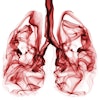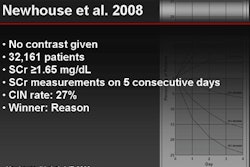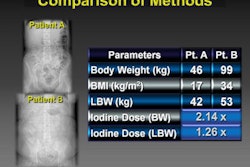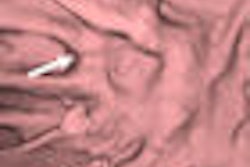Dear AuntMinnie Insider,
Thanks to the brave techno wizards who live and breathe Hessian matrices and ray-casting algorithms, electronic cleansing (EC) of virtual colonoscopy images has improved mightily in the past five years.
Today's cleaner and leaner "virtually cleansed" datasets are largely free of the eye-crossing artifacts of the mid-2000s, a time when EC software was almost certain to erase part of the colon along with the tagged stool, confounding the computer-aided detection software for good measure.
Of course, EC schemes are still very much in the investigational stages. But evidence of their rapid evolution can be found in this issue's Insider Exclusive. Researchers from Massachusetts General Hospital and Harvard Medical School in Boston recently unveiled their structure-analysis cleansing process, a suite of three algorithms designed to compensate for wide variations in the quality and consistency of tagged VC data.
A study from another pioneering organization in advanced imaging tools, the National Institutes of Health in Bethesda, MD, borrowed an idea from geographic information systems to provide topographical height mapping in polyp measurement and false-positive reduction.
In politics, the American Cancer Society's Dr. J. Leonard Lichtenfeld blasts the recent decision by the Centers for Medicare and Medicaid Services to deny coverage for virtual colonoscopy screening. Like many radiologists disturbed by the May 12 decision, Dr. Lichtenfeld smells something funny.
As for screening and risk, a new colonoscopy study from Vermont found that it was safe to wait as long as 10 years to rescreen subjects who had low-risk growths removed at polypectomy. Meanwhile, a large French study found that VC is cost-effective, and removing diminutive polyps increases the cost exponentially while doing little to extend the lives of patients.
An Italian multicenter trial published in the Journal of the American Medical Association concluded that VC was effective in higher-risk subjects.
Another study found that the risks from colonoscopy increase with age and comorbidities. Unfortunately, primary care physicians aren't telling their patients about all the screening methods available to them.
We invite you to scroll down for more stories in your Virtual Colonoscopy Digital Community.



















